Chicago-based structure agency Studio Gang has designed the Gilder Middle in Manhattan to prioritize connectivity, creating an enormous cavernous atrium meant to impress a way of exploration and discovery.
The Richard Gilder Middle for Science, Innovation, and Schooling is a brand new addition to the American Museum of Pure Historical past off Central Park that unites, visually and functionally, the 26 buildings constructed there since its opening within the late nineteenth century.
Positioned between two Romanesque buildings, the construction has a stone facade made with a mega-panel system that references the geometry of the adjoining buildings.
This makes use of the identical stone as the first entrance constructing – Milford pink granite sourced from the unique quarry, which reopened for the event.
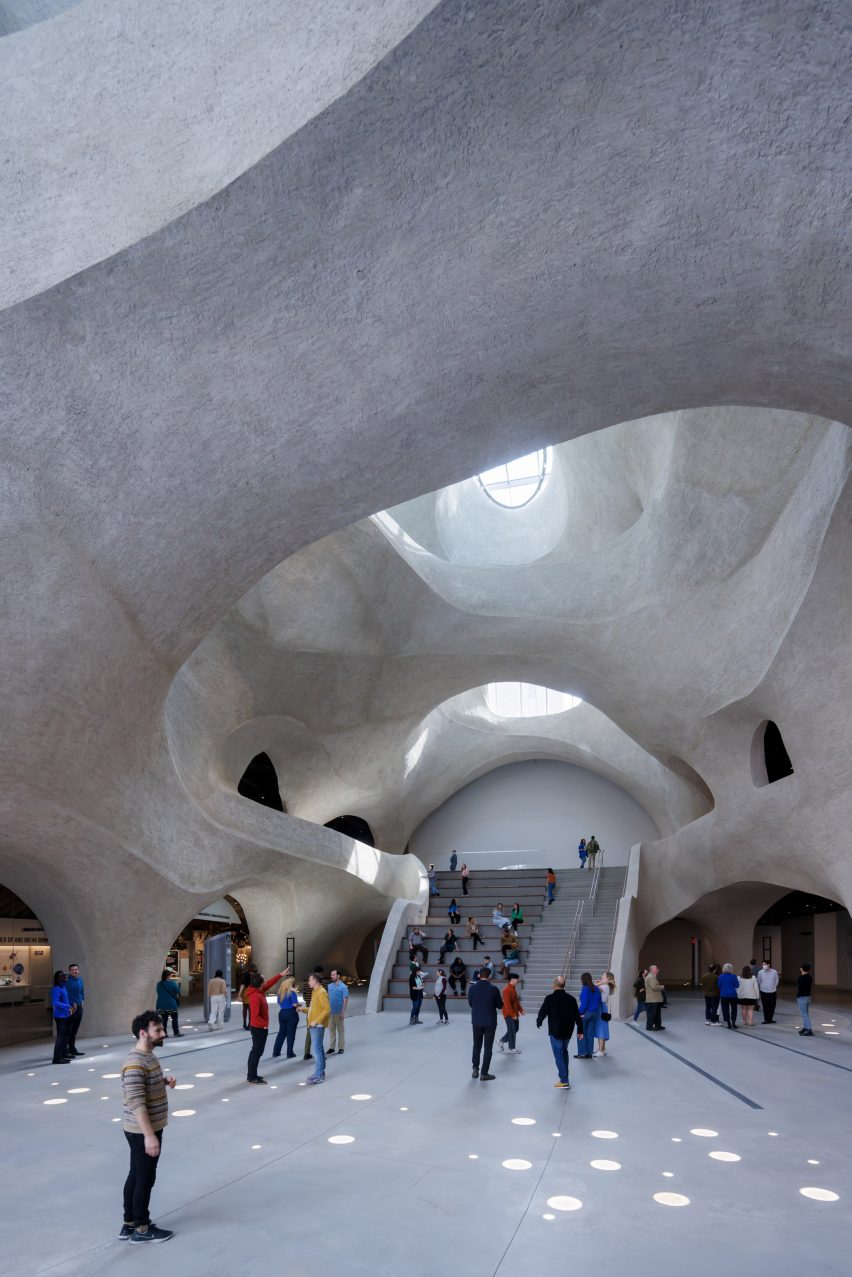
The six-storey constructing is tucked away from the road, between the opposite buildings, which led Studio Gang founder Jeanne Gang to name it an “inny constructing”.
The studio targeted on inner experiences and connections to the remainder of the museum’s buildings, as an alternative of attempting to make the brand new addition an “object” constructing.
“Architects in the previous couple of years have been doing object buildings: it appears like one thing from the skin, a flowery form or one thing like that,” Gang informed Dezeen.
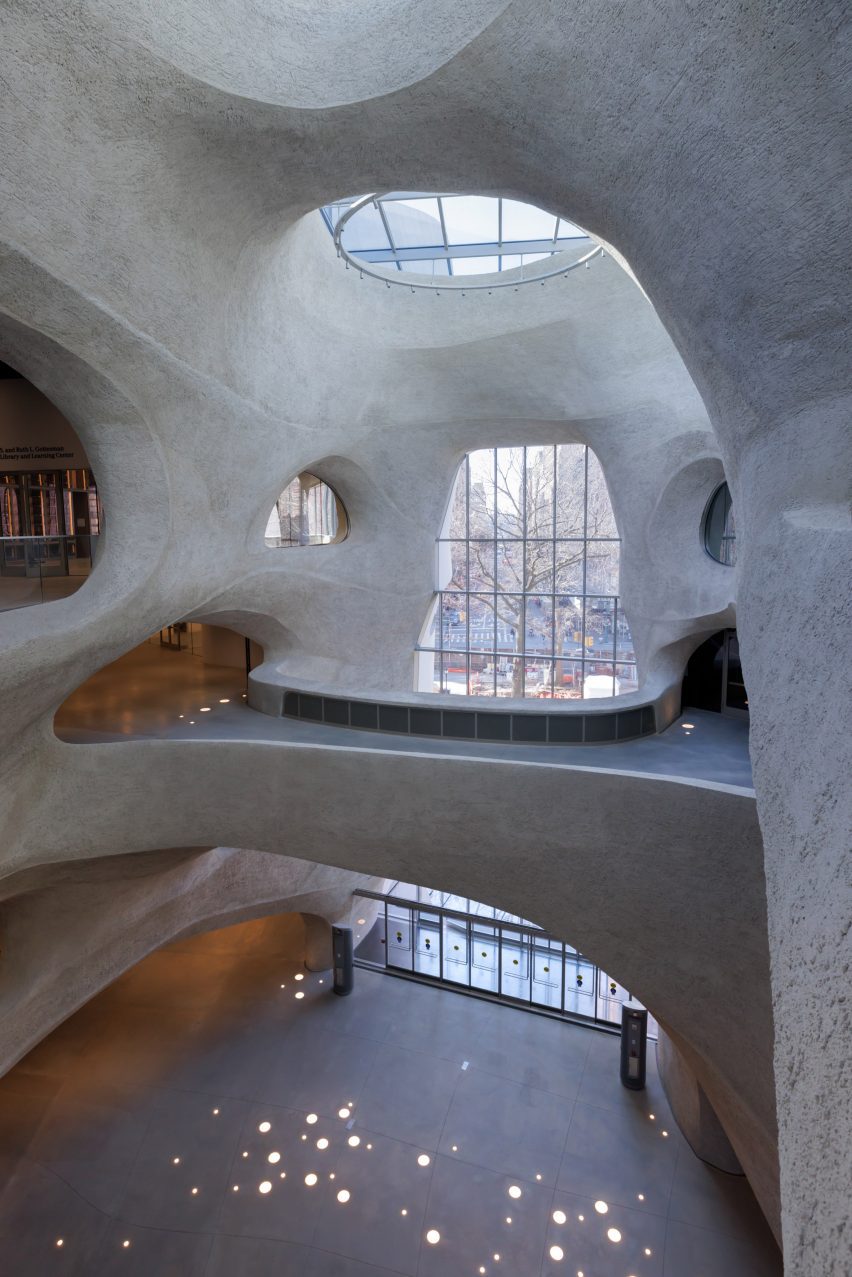
“However that is under no circumstances what we have been doing right here as a result of we actually began by making the museum extra connective,” Gang added.
“So it ended up being the inside construction that was an important architectural aspect.”
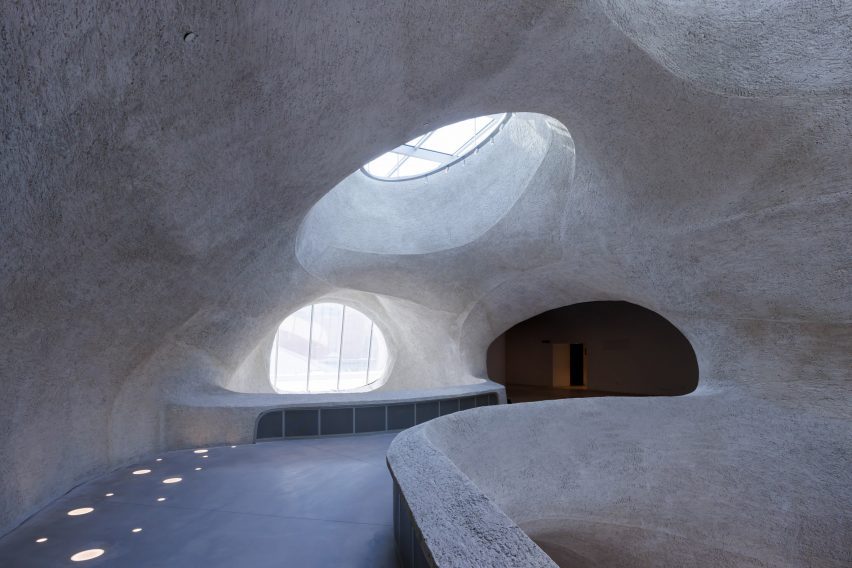
She added that whereas the constructing and its exploration are nice for kids, it’s meant to convey out pleasure in everybody.
“To be an architect is to increase your childhood all through your whole life,” she mentioned. “It is concerning the pleasure of exploring an area.”
The inside revolves across the Kenneth C Griffin Exploration Atrium, a five-storey construction with cave-like partitions and overhead bridges.
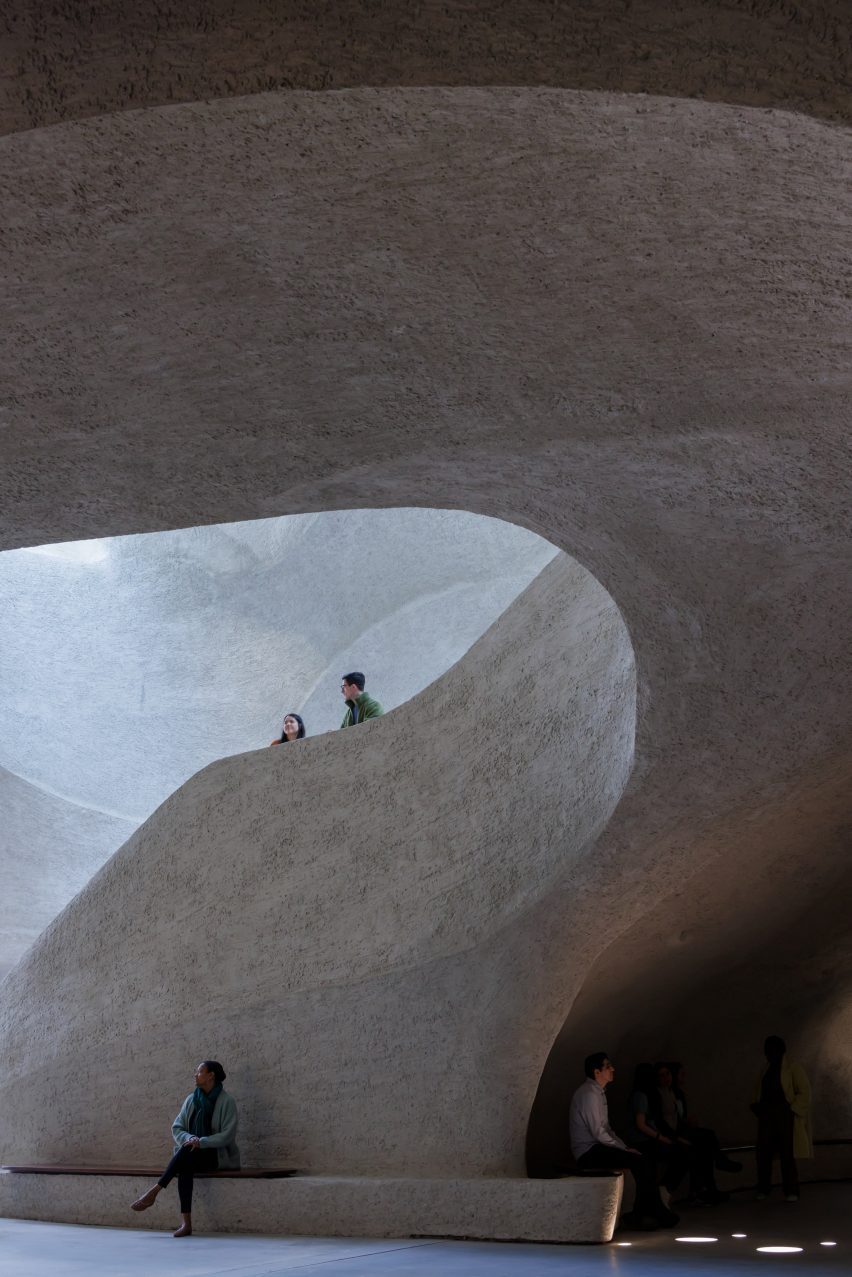
Studio Gang tapped engineering agency Arup to design the area, which was created with rebar and shotcrete, a way for pouring concrete foundations that sprays the moist concrete.
This removes the necessity for formwork and permits for non-repetitive shapes.
The atrium, which is topped by round skylights and options a big stair and seating configuration at its centre, was hand-finished.
Moreover being the organisational centre of the construction, additionally it is the structural centre, because it helps the remainder of the constructing.
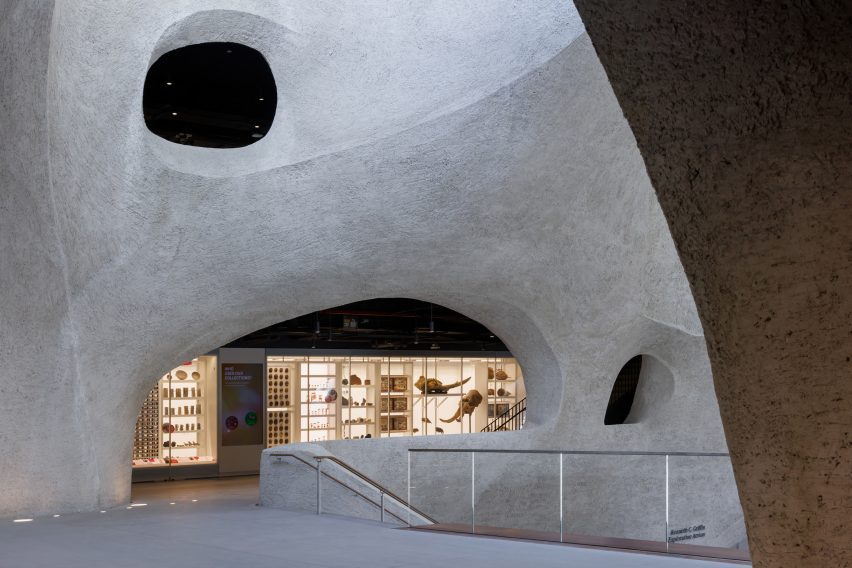
Its look was knowledgeable by the caves and canyons of the American Southwest and the subway infrastructure beneath Manhattan, for which the shotcrete technique is mostly used.
“It is a modern area that’s evocative of discovery, and I feel that is one thing it has in frequent with pure landscapes like caves, grottoes and cenotes,” Gang informed Dezeen.
“It is not about pure transparency. I am unable to see all the pieces .”
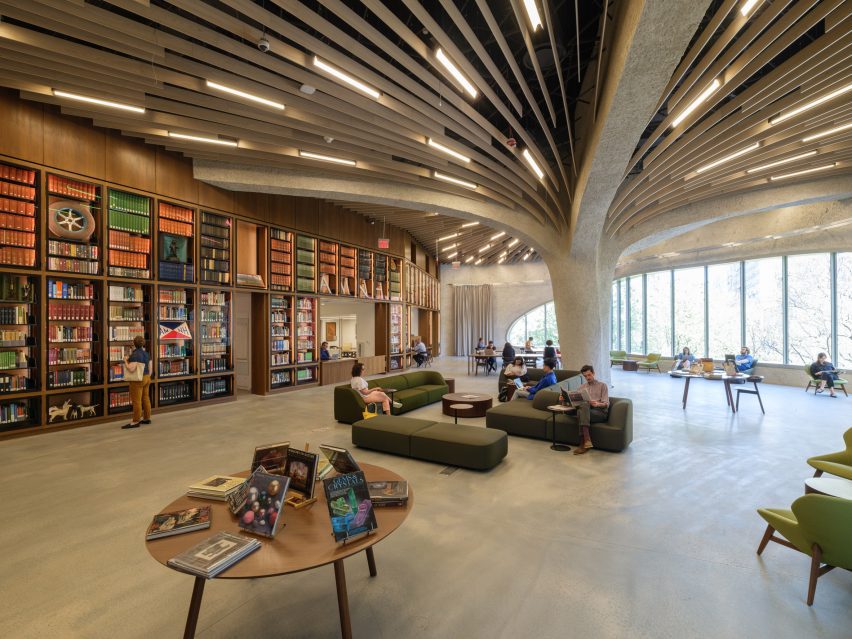
The outside additionally has an attention-grabbing visible language, with a posh collection of panels that step up in an natural method, with uneven, bird-friendly glazing.
The doorway to the construction is an enormous wall of glass that extends nearly the complete top of the atrium.
The staff, together with the museum officers, wished the Gilder to be a spot that “invitations individuals in” and promotes a “higher understanding and appreciation of science”.
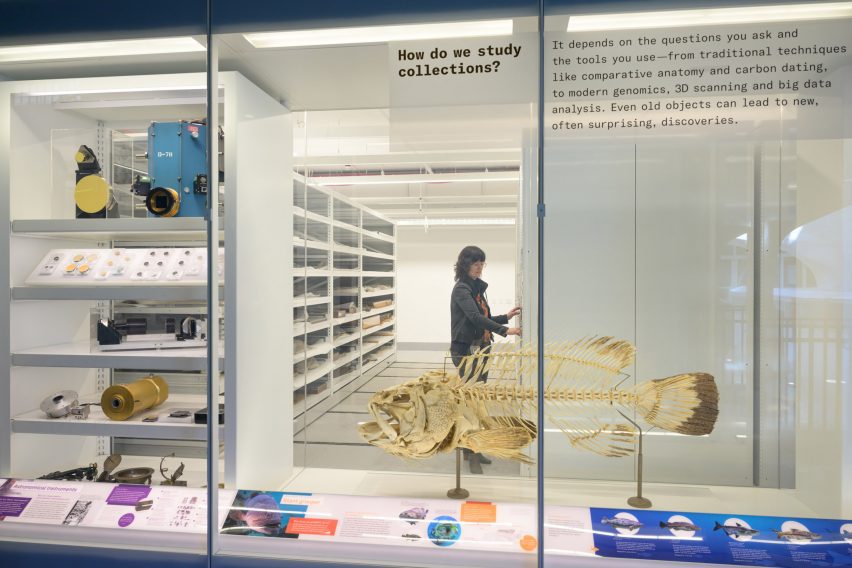
For Gang, the mission is an instance of “actionable idealism”, which she defined as design that works “in the direction of addressing these pressing challenges which can be dealing with us at this time”.
Gang pointed to the shortage of formwork within the shotcrete design and the promotion of science studying on the whole.
Gentle was an vital facet of the design, with the atrium, lecture rooms and different public areas such because the cafe being positioned close to the entrance of the museum and the gallery areas tucked inside.

The mission noticed the addition of quite a few galleries equivalent to an insectarium, the multi-media Invisible World everlasting exhibition, and 40,000 sq. ft (3,716 sq. metres) of renovation work.
Additionally included is the Studying Room on the fourth ground, which has an enormous concrete help system that appears like a mushroom.
The topmost two flooring of the construction are devoted to analysis and collections, housing specialised laboratories.
The interiors of the galleries are minimal, with wooden and white-painted partitions and plentiful lit-glass panels opening them as much as the corridors, which have concrete flooring and uncovered mechanical methods overhead.
The centre’s opening sees the completion of practically 10 years of labor from the studio and its collaborators, which included panorama design studio Reed Hilderbrand and Ralph Applebaum Associates, which dealt with the exhibition design.
Different current tasks by Studio Gang embody the Arkansas Museum of Nice Arts, which additionally connects a collection of traditionally and bodily disparate buildings.
The pictures is by Iwan Baan until in any other case acknowledged.
Mission credit:
Design architect: Studio Gang
Govt architect: Davis Brody Bond
Panorama architect: Reed Hilderbrand
Engineering: Arup, Buro Happold, Langan Engineering
Different collaborators: Atelier Ten, Bergen Road Studio, Design & Manufacturing Museum Studio, Occasion Community, Hadley Reveals, Ralph Applebaum Associates, Tamschick Media+Area, AECOM Tishman, Venable LLP, and Zubatkin Proprietor Illustration.

